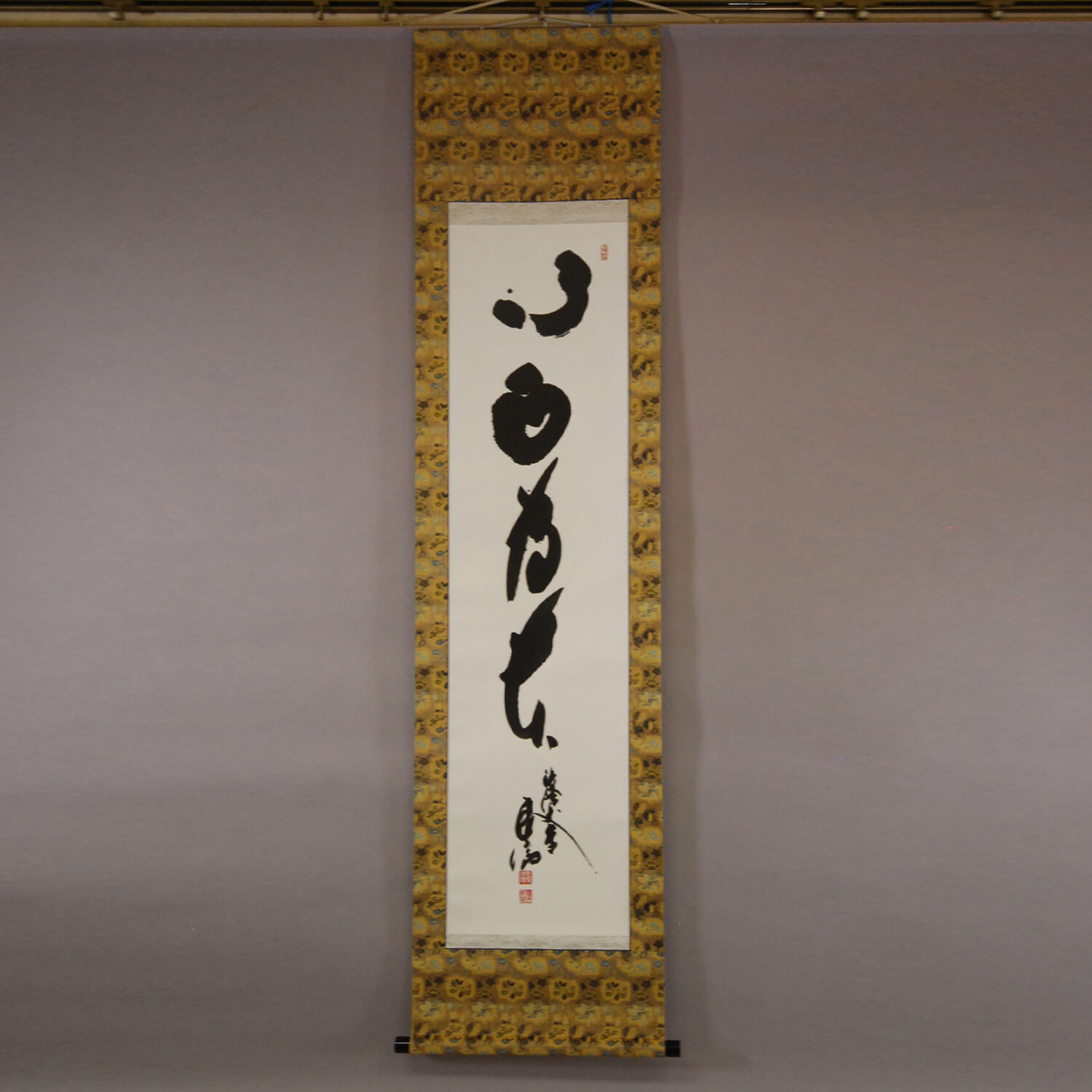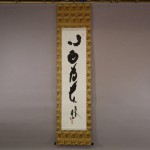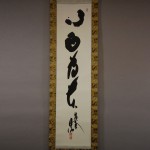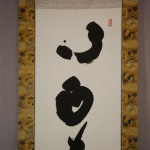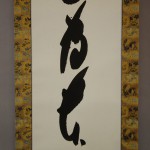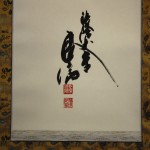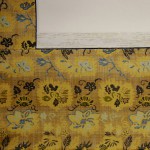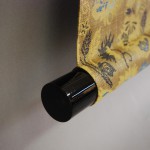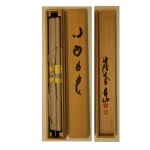Products Lineup
News / Blog
Other Menus
Kakejiku Hanging Scroll: Calligraphy: Wa-wo-motte Tōtoshi-to-nasu / Takada Ryōshin - Harmony Is the Greatest of Virtues
- Product ID
- 0172
- Name
- Takada Ryōshin
- Profile
1941-2017
A patriarch of the Hōryū-ji Temple- Size
- 510mm x 1910mm
- Roller End Material
Wood coated with black "urushi" (lacquer)- Material of the Work
- Japanese paper
- Stock Condition
- Sold out
- Description
Foreign visitors who come to Japan and the Japanese who become avid religious followers say they can see that many Japanese people unconsciously have an idea of placing supreme importance on “harmony.” The Seventeen-Article Constitution, which was laid down by Prince Shōtoku in 604, says “Harmony is the greatest of virtues.” In fact, we can see that the Japanese people have long valued harmony since ancient times.
This is a work of calligraphy by Takada Ryōshin, who was a patriarch of the Hōryū-ji Temple, after being the 128th “kannushi” (the chief priest) of the Hōryū-ji Temple. Takada Ryōshin, who was well known for his good handwriting, rarely creates work for the purposes of selling it, so this work is very rare. The meaning of the writing in the scroll is: “Harmony is the greatest of virtues.” This calligraphy work is very great, letting us feel strength by the lively lines.

